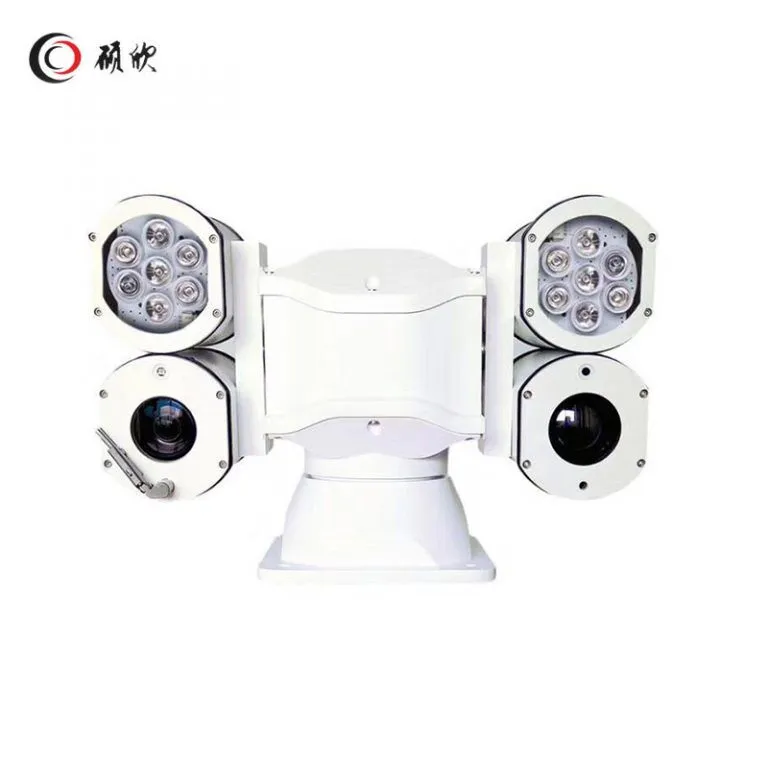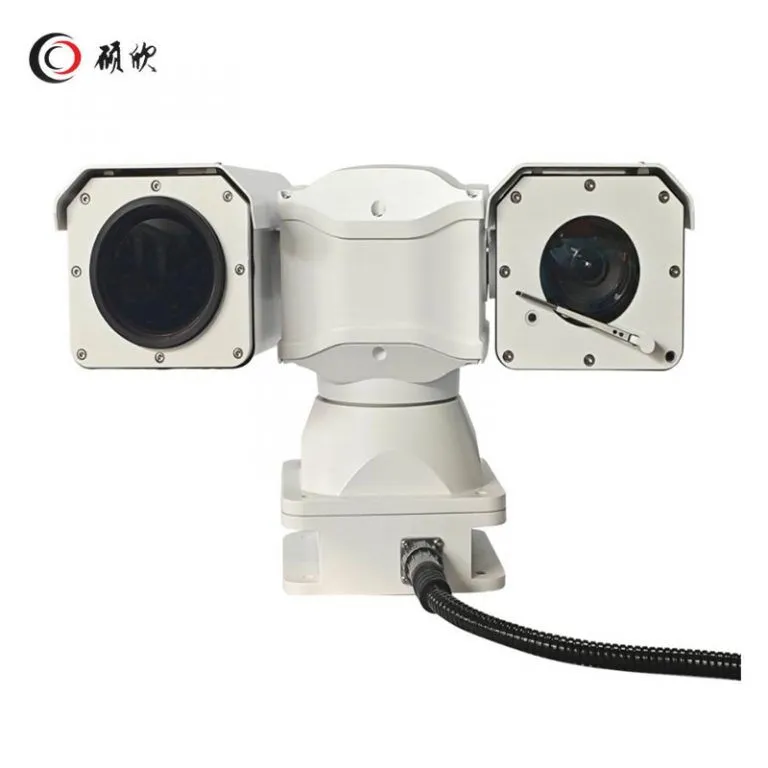Imagine you’re stationed at a remote power substation on a foggy night, scanning vast stretches of transmission lines that snake across miles of rugged terrain. One wrong oversight could mean a blackout affecting thousands, or worse, a fire hazard left unchecked. Thermal imaging cameras cut through that haze, spotting heat anomalies from over 150 meters away—whether it’s a smoldering fault in the wiring or an intruder breaching the perimeter. But not all thermal lenses perform the same in these high-stakes moments. The aperture size, measured by the F-number, makes all the difference in how much infrared energy your camera captures, directly shaping your detection speed and accuracy.
You rely on tools that don’t just see heat—they reveal threats before they escalate. That’s where experts like those at Shuoxin step in. With over a decade honing cutting-edge surveillance tech for demanding outdoor environments, Shuoxin crafts PTZ cameras that blend thermal precision with visible clarity. Picture this: their multi-spectral designs fuse infrared detection with high-zoom optics and laser illumination, all housed in shockproof casings built for patrol vehicles or border towers. I’ve seen these systems in action during field tests—operators rave about the seamless PTZ controls that let you pivot 360 degrees without missing a beat, even in -35°C chills or pounding rain. It’s not hype; it’s hardware that slashes response times in real scenarios, like forest fire patrols where early smoke detection saves ecosystems. Shuoxin’s commitment shines in details like heated lenses that defy frost and AI analytics that flag anomalies instantly. If you’re gearing up for long-range vigilance—think electricity grid monitoring or law enforcement convoys—their solutions turn guesswork into guarded certainty. Dive deeper into their lineup, and you’ll find why pros trust Shuoxin to keep the unseen in sight.
Now, let’s zero in on aperture sizes. You know a camera’s lens acts like an eye, but in thermal imaging, the F-number dictates how wide that eye opens to infrared waves. A lower F-number, say F/1.0, means a larger opening. This pulls in more thermal energy, especially vital when temperatures barely differ from the background—like spotting a distant engine overheating on a patrol route.
Core Principles of Thermal Imaging Aperture Sizes
You pick your gear based on what it delivers in the field, so grasp how aperture works first. The F-number calculates the ratio of your lens’s focal length to its diameter. Drop that number, and the aperture widens. For instance, F/1.0 scoops up roughly four times the infrared light compared to F/2.0. This boost matters in low-contrast scenes, common in outdoor surveillance where fog or dust scatters signals.
Consider focal length next—it pairs with aperture to define your view. Shorter focal lengths, like 15mm, pair with wide apertures for broad sweeps across a landscape. Longer ones, around 50mm, narrow the focus for pinpoint detail at distance. Both setups often hit F/1.0 in top-tier systems, but the combo shifts your capabilities. You gain sensitivity measured in milliKelvins (mK)—under 35mK catches the tiniest heat shifts, say a hiker’s body warmth against a cold border fence from 500 meters out.
These elements tie into noise equivalent temperature difference (NETD), your camera’s noise floor. Low F-numbers cut noise, sharpening images in dim thermal bands (8-14μm). You end up with crisper edges on power line insulators glowing faintly at dusk. Without this, faint signatures blur, delaying your alert on a substation breach.
Aperture Sizes and Their Effects on Thermal Performance
Building on those basics, see how aperture choices ripple through your operations. Start with detection range. A wide F/1.0 aperture floods the sensor with energy, extending reach. In tests, systems with this spec spot human-sized targets over 1km in clear air—crucial for forest fire crews eyeing smoke plumes from afar. Narrower effective apertures (via longer focal lengths) trade breadth for depth, locking onto vehicle exhausts at 2km during road patrols, where every second counts.
Sensitivity follows suit. You need gear that discriminates subtle gradients, like a slight rise in voltage transformer heat. Low F-numbers enhance this, dropping NETD to reveal anomalies others miss. Pair it with uncooled vanadium oxide detectors, and you handle 640×512 resolutions without cooldown delays, keeping your feed steady on a bouncing police cruiser.
Field of view (FOV) rounds it out. Wide apertures with short focal lengths yield horizontal FOVs up to 60 degrees, ideal for scanning open grids or trails. You cover more ground, reducing blind spots in edge-of-town power corridors. Flip to longer focal lengths for 2-3 degree FOVs; details pop, like identifying a poacher’s rifle barrel in thick brush. Trade-offs exist—wider views might dilute resolution at extremes, but smart fusion with visible channels compensates, overlaying thermal data on zoomed optics.
Environmental factors amplify these impacts. Rain or smoke attenuates infrared, yet robust apertures maintain signal strength. You stay operational when lesser lenses falter, ensuring uninterrupted watch over remote hydro lines or coastal enforcement zones.
Spotlight on Products That Harness Aperture Power

You deserve examples that match your needs, so let’s examine two PTZ cameras tailored for long-range outdoor demands. These models leverage F/1.0 apertures but vary focal lengths to suit your scenario.
Take the multi-spectral long-range thermal imaging PTZ camera. Its 35mm thermal lens (with 15mm or 25mm options) delivers under 35mK sensitivity. You get a balanced FOV for mid-range sweeps—perfect for border patrols where you track movements across 150-800 meters. The PTZ swings 360 degrees endlessly, tilting +90 to -90, with 100°/s pan speeds. Fuse it with a 33x visible zoom and 500m laser, and you dissect threats in real time: a vehicle idling suspiciously near a fence line. In power line inspections, this setup flags hot spots on insulators from afar, preventing outages. Its IP66 shell shrugs off humidity under 90%, and heated glass clears frost mid-shift. You operate confidently in -35°C to +55°C, with AI spotting intrusions or gatherings before they spread.
Shift to the thermal PTZ camera for tighter focus. With a 50mm lens (options up to 75mm or zoomable 20-100mm), it hones in on distant details, still at F/1.0 and <35mK. Ideal for substation overviews, you detect arc flashes over 1.5km, where narrow FOV sharpens the view to 1.6 degrees horizontally. The 52x visible zoom complements, pulling faces or license plates into clarity during emergency vehicle pursuits. PTZ mirrors the first—endless rotation, rapid presets (256 positions), and RS485 controls for seamless integration. Add defrost wipers and shock absorbers, and it thrives on rough forest roads, alerting to fire risks via audio or motion cues. You cut false alarms with smart filters, focusing on real dangers like unauthorized access to hydro dams.
These cameras shine in cohesion. The first broadens your horizon for proactive scans; the second drills down for verification. Both support H.265 compression and ONVIF protocols, streaming flawlessly to your command center. In a unified setup, you layer wide coverage with targeted zooms, elevating your entire surveillance chain.
Benefits of Aperture-Tuned Gear for Your Missions
You invest in tech that pays off in reliability, so weigh the upsides. Aperture-optimized lenses like F/1.0 mean you detect sooner—critical when a spark on high-voltage lines could ignite dry underbrush 200 meters off. These systems extend effective range without added power draw, fitting DC12V vehicle mounts for mobile ops.
Durability follows. Rugged casings (8kg lightweight builds) endure vibrations on alert cruisers or wind-swept towers. You face less downtime; heated elements and IP66 seals keep optics clear through monsoons or blizzards. Integration eases too—plug into existing networks via Pelco protocols, and your team accesses fused feeds instantly.
Cost efficiency emerges over time. Low-noise apertures reduce alert fatigue, letting operators focus on verified threats in vast border expanses. Case in point: a utility firm cut inspection hours by 40% using similar wide-FOV models, spotting line sags early. For fire wardens, narrow-focus variants pinpoint hotspots, averting evacuations.
You also gain versatility. Multi-spectral fusion overlays thermal pallettes (white hot to rainbow) on visible IR-enhanced night vision up to 150m base, extending to kilometers with zoom. AI layers—cross-border alerts, loitering detection—filter noise, boosting accuracy in dynamic scenes like convoy escorts.
Tailor to your role: opt for shorter focal lengths in expansive forest grids for early fire cues; choose longer for precise substation audits. Either way, you command clearer intel, faster responses, and safer perimeters.
Service That Keeps You Ahead
You expect support that matches your gear’s grit, and that starts post-purchase. Round-the-clock tech lines guide firmware tweaks or PTZ calibrations, ensuring peak performance on your next patrol. Customized installs—whether tower-mounting for border views or vehicle retrofits for enforcement—align with your workflow.
Ongoing updates refine analytics, adapting to evolving threats like drone incursions near power relays. Extended warranties cover harsh exposures, minimizing surprises. Training sessions equip your crew, turning complex fusions into intuitive tools.
In essence, this backbone lets you sustain long-range edge without constant tweaks. Reach out for a tailored demo; see how these aperture-driven systems fortify your watch.
FAQ
Q: How does a lower F-number like F/1.0 improve detection in foggy conditions for outdoor power line monitoring?
A: It widens the lens to capture more infrared energy, piercing fog’s attenuation for clearer heat signatures on lines over 150 meters, reducing missed faults.
Q: Can I switch focal lengths on these PTZ cameras for different long-range tasks, like border scans versus substation checks?
A: Yes, options like 15mm for broad border sweeps or 50mm for detailed substation views let you adapt without swapping units, maintaining F/1.0 sensitivity throughout.
Q: What makes these thermal PTZ cameras suitable for vehicle-mounted use in forest fire prevention?
A: Shockproof builds, wide temperature tolerance, and rapid PTZ speeds handle rough terrain, while fused imaging spots smoke plumes from afar, enabling quick maneuvers.


